Attracting Beneficial Insects to Help Your Garden Thrive
This post may contain affiliate links. Read my full disclosure here.
Creating a healthy garden doesn’t just mean eliminating bad bugs – you also want to welcome good bugs. These “good bugs” are also known as beneficial insects.
We’ll talk about what beneficial insects do in the garden, common species, host plants and tips for attracting “good bugs” to your garden.
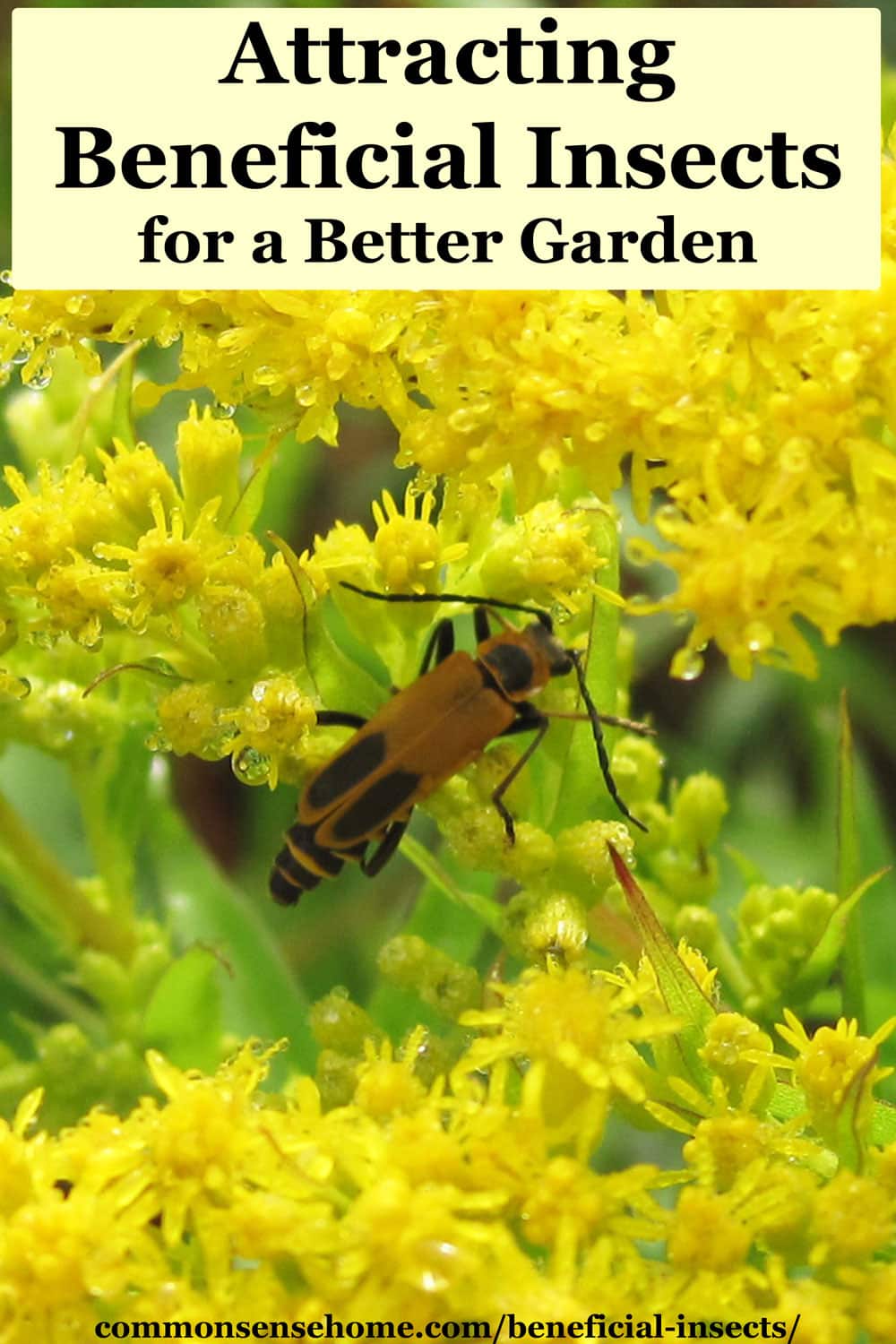
What do beneficial insects do?
Beneficial insects play a variety of rolls in the garden. Pollinators, like bees, butterflies and moths, help plants to bear fruit.
Honeybees get most of the press, but our native bees are a boon to the garden, too. Some plants even require bigger bees like bumblebees to release their pollen.
Some insects help with biological control of garden pest bugs. For instance, parasitic wasps lay their eggs on tomato hornworms. When the eggs hatch, the larvae eat the hornworm.
Still others help break down organic matter and wastes, and improve the soil. Grab a handful of health garden soil or compost, and you’ll find that it’s crawling with a variety of bugs.
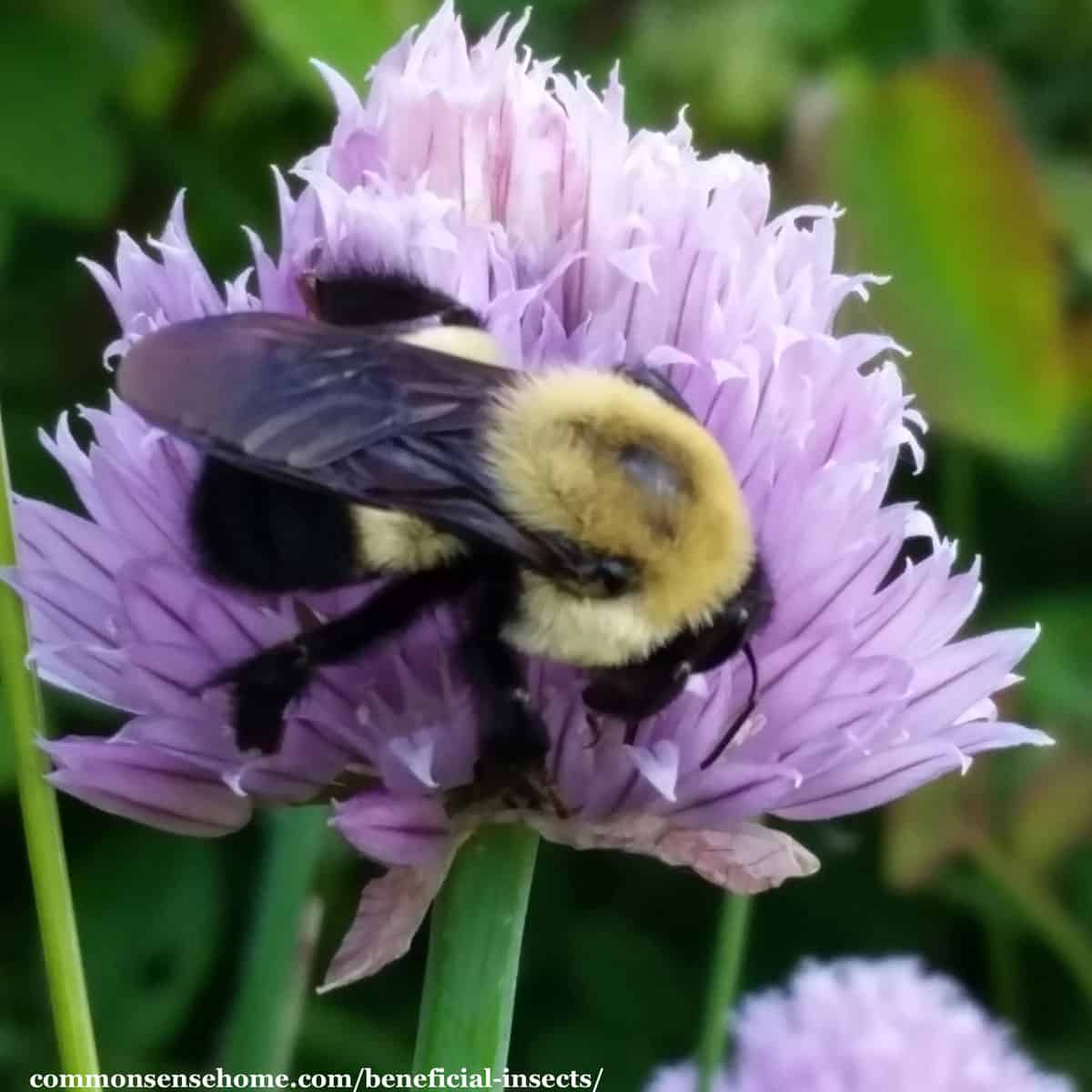
Host Plants for Good Bugs
I plant a variety of host plants for beneficial insects around the garden (or allow them to grow on their own), such as:
- yarrow
- cosmos
- catnip
- borage
- dill
- dandelion
- Queen Anne’s lace
- butterfly weed
- sweet alyssum
- parsley
- lemon balm
- zinnias
Beneficial insects will often use host plants during their larval stage before they begin hunting other insects.
To attract pollinators, work to keep blooming plants available in your yard from early spring to late fall. If it’s warm enough for bees to be active, they’ll want to gather nectar and pollen.
I use companion planting, but I’m rather haphazard about it for the most part. Every bed gets some flowers and herbs along with the veggies and fruits. You can learn more about companion planting in the post Vegetable Companion Planting.
See the Weekly Weeder series for more information on wild plants and their role in the ecosystem, as well as their uses for food and medicine.
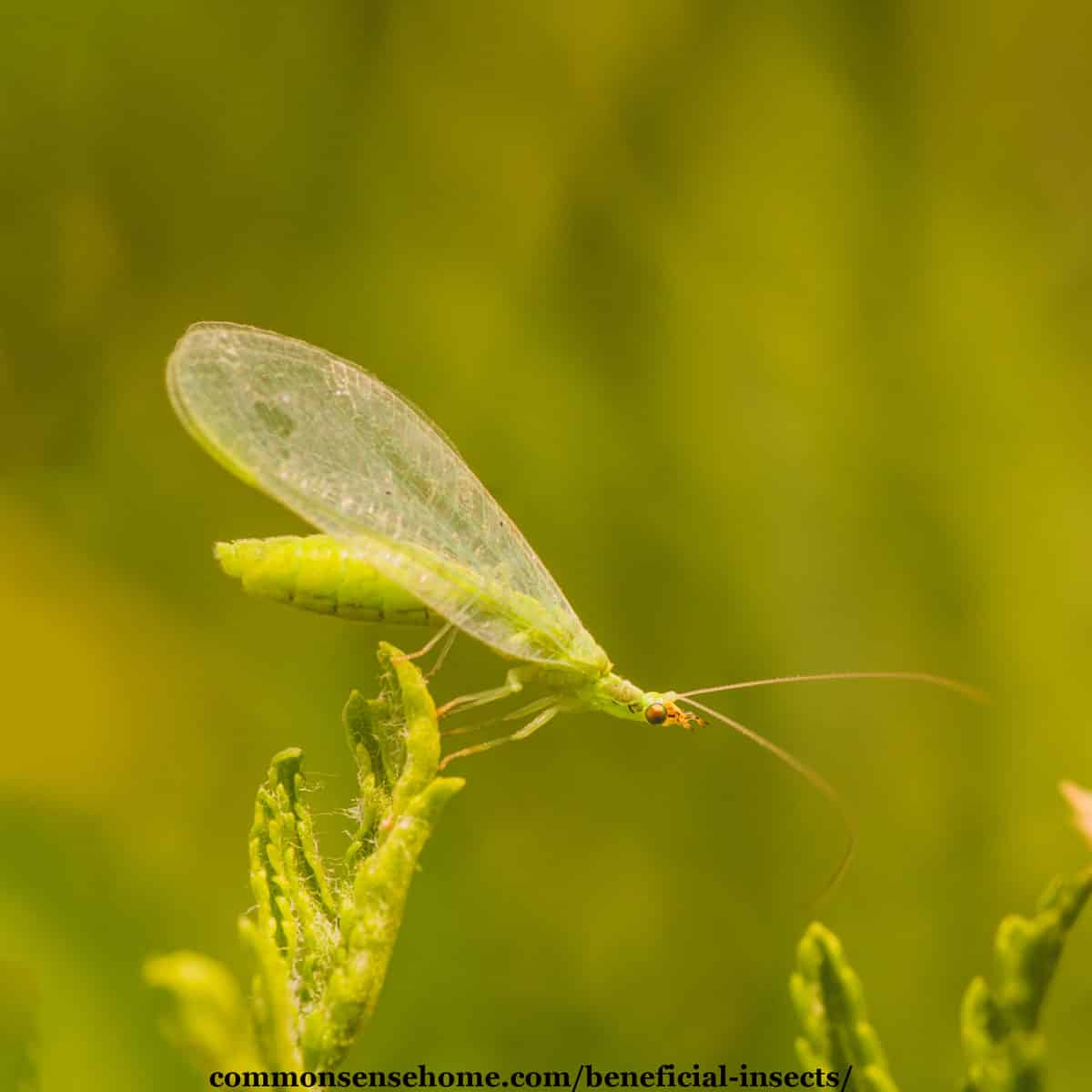
Common Beneficial Insects
Along with bees and butterflies, some common beneficial insect species include:
Would you like to save this?
- Lady beetles – lady bug larva eat aphids by the dozens
- Green lacewings – the larvae attack soft-bodied insects
- Syrphid flies (hoverflies) – their larvae kill aphids, caterpillars, thrips and beetles
- Ground beetles – eat nematodes, caterpillars, slugs, silverfish, weevils and thrips
- Praying Mantis – knock out grasshoppers, moths, beetles and more
- Fireflies hunt soft bodied invertebrates like slugs, snails and mites
- Mealybug destroyers wipe out aphids and other small, soft insects
- Predatory mites kill harmful mites, such as spider mites
- Pirate bugs kill spider mites, insect eggs and small caterpillars
- Spiders – these equal opportunity predators take out anything that hits their webs
- Soldier beetles – hunt Mexican bean beetles and Colorado potato beetles
- Soldier bugs (predatory stink bugs) – eat caterpillars and other larvae
- Tachinid flies – parasitize Japanese beetles, corn borers, squash bugs and many other pests
- Braconid and Ichneumonid Wasps – lay eggs on tomato hornworms
I’ve watched wasps carry off caterpillar and beetle larva, and seen little wrens working over the broccoli.
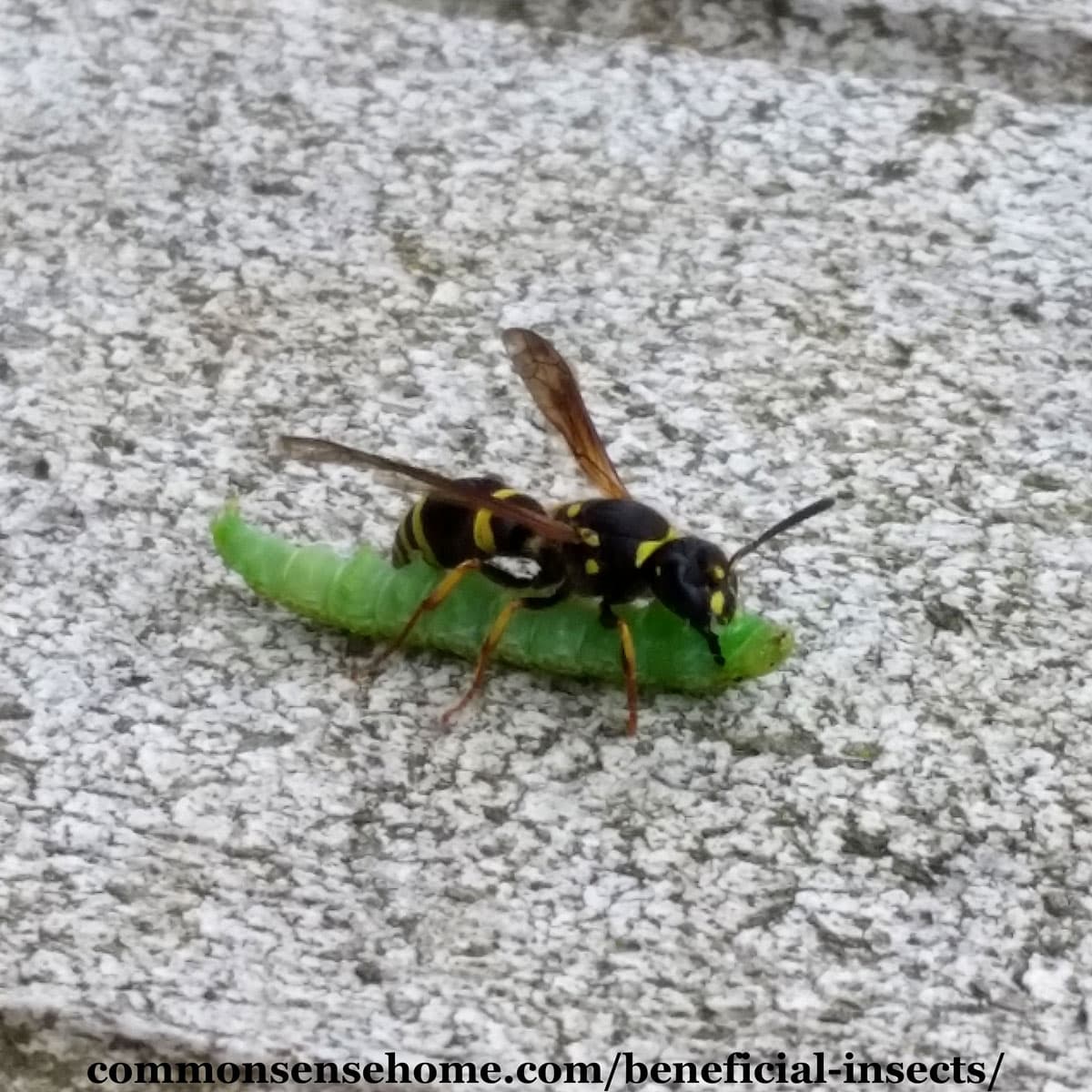
Welcoming Beneficial Insects and Animals in Your Garden
I encourage insects, birds, bats, toads, snakes and frogs in the garden by:
- Providing water in a raised bath and at ground level
- Using mulch
- Adding bat houses
- Providing perches (the wooden marker posts and trellises around my garden do double duty)
- Stacking piles of rocks and other “hiding spots” for bugs, toads, snakes and frogs
- Leaving some undisturbed areas around the yard for nests and burrows
We have beautiful little northern red belly snakes in our area that are about the size of a pencil, and they gobble up crickets and slugs. I’ve seen several different types of tree frogs hunting in the garden.

The photo above is a tree frog we found in the bean patch.
With water features, make sure that you keep the water moving, or swap out water regularly. Mosquito larva breed in stagnant water in just a few days.
Welcoming beneficial insects and other predators is an important part of our natural pest control strategy for the garden.
More Information on Good Bugs and Bad Bugs
I’ve been using the term “bad bugs”, but to be fair, bugs just want to live. They can cause damage, but if we create a healthy and balanced ecosystem, serious damage is rare.
When we plant acres and acres of monocrops in dead soil, propped up by chemicals, it’s like putting up an “all you can eat buffet” sign for pests.
Don’t just treat the symptoms of problems in your garden – look for the underlying causes.
Are your plants under stress from too much water or too little? How’s your garden soil fertility? Do you have a good balance of nutrients? Are you trying to grow crops that aren’t well suited for your area?
Work to get your plants as healthy as possible, welcome beneficial insects, and enjoy the bounty of your garden.
You may also find helpful:
5 Tips for a Bee Friendly Yard
Bumblebee – Super Charged Pollinator for Your Yard and Garden
Natural Spider Repellents (and Why You Should Make Peace with Your Spiders)

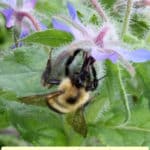
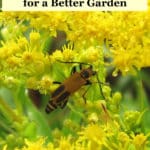
I have a toad who has taken a liking to my container gardening on the patio. I have tried relocating him to my in ground garden, but he keeps coming back to the patio. I told him today that he is more than welcome, but to watch out for the beagle. (yes, I talk to the toad, and I talk to my plants too)
I have always planted marigolds in my garden. to attract beneficials and pollinators. I tried to grow some other flowers and herbs this year, but that turned out to be a bust. But my marigolds are there, tried and true!
I found a HUGE toad in the chicken pen yesterday morning. Thankfully I was able to rescue it before the hens got it.
Just because we don’t understand what they say, doesn’t mean that plants and animals don’t communicate in their own ways, too. It’s only polite to chat with them in return.